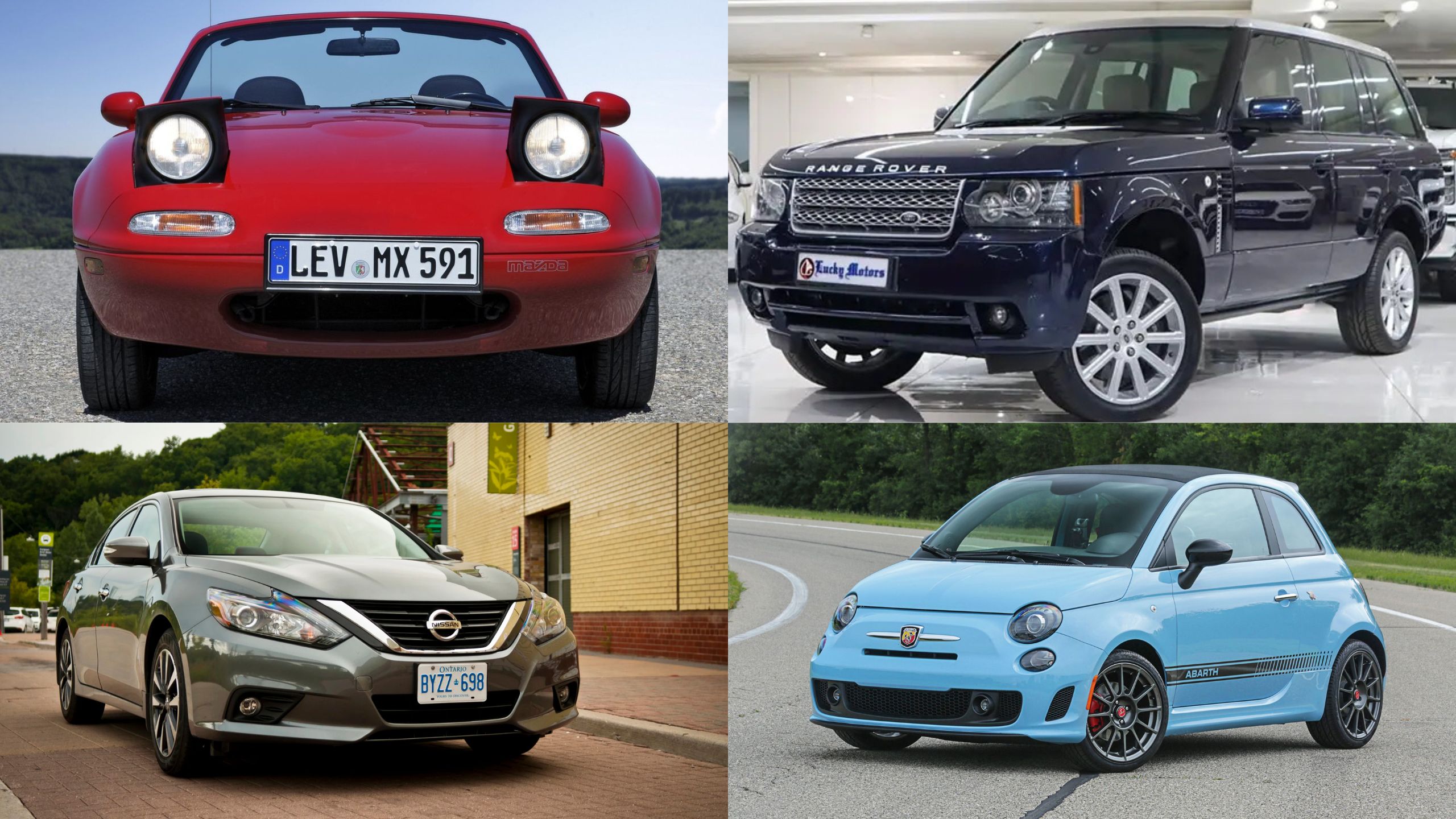For most Americans, the morning routine hinges on one crucial moment: when you turn the key or press the start button in your car. That instant of anticipation reveals whether you’ll arrive at work on time or be calling for a ride.
While modern vehicles have made tremendous strides in reliability over the decades, not all cars are created equal when it comes to consistent, trouble-free operation.
Reliability isn’t just about avoiding catastrophic failures; it’s about the confidence that your vehicle will perform as expected every single day without unpleasant surprises.
The most dependable cars require minimal unscheduled maintenance, start without hesitation in all weather conditions, and maintain their performance characteristics over many years of ownership.
Conversely, problematic vehicles can turn ownership into a costly gamble, with unpredictable breakdowns, electrical gremlins, and chronic issues that mechanics struggle to permanently resolve.
These automotive troublemakers can leave you stranded, drain your bank account, and erode your trust in a manufacturer’s reputation.
In this guide, we’ll examine five vehicles you can count on to get you to your destination without drama, as well as five notorious models that have earned reputations for leaving their owners frustrated at the most inconvenient times.
5 Cars You Can Depend On Every Morning
Whether you’re shopping for your next vehicle or simply curious about automotive reliability, this overview offers valuable insights into which cars deserve your trust and which ones might be better admired from a distance.
1. Toyota Camry
When discussions of automotive reliability arise, the Toyota Camry invariably emerges as a gold standard. This midsize sedan has built a reputation over decades as the quintessential worry-free commuter car, with many examples sailing past 300,000 miles with only routine maintenance.
The Camry’s legendary dependability isn’t accidental but stems from Toyota’s conservative engineering philosophy that prioritizes proven technology over cutting-edge innovations.
Under the hood, the Camry’s engines, particularly the 2.5L four-cylinder are marvels of simplicity and durability. Toyota has refined rather than reinvented this powerplant over generations, resulting in a mechanical heart that rarely skips a beat.
The traditional automatic transmission avoids the pitfalls that plague more complex dual-clutch or CVT systems in competitor vehicles.
Even in the hybrid variants, which Toyota has been perfecting since the early 2000s, the Camry demonstrates remarkable longevity with battery packs often lasting well beyond their warranty periods.
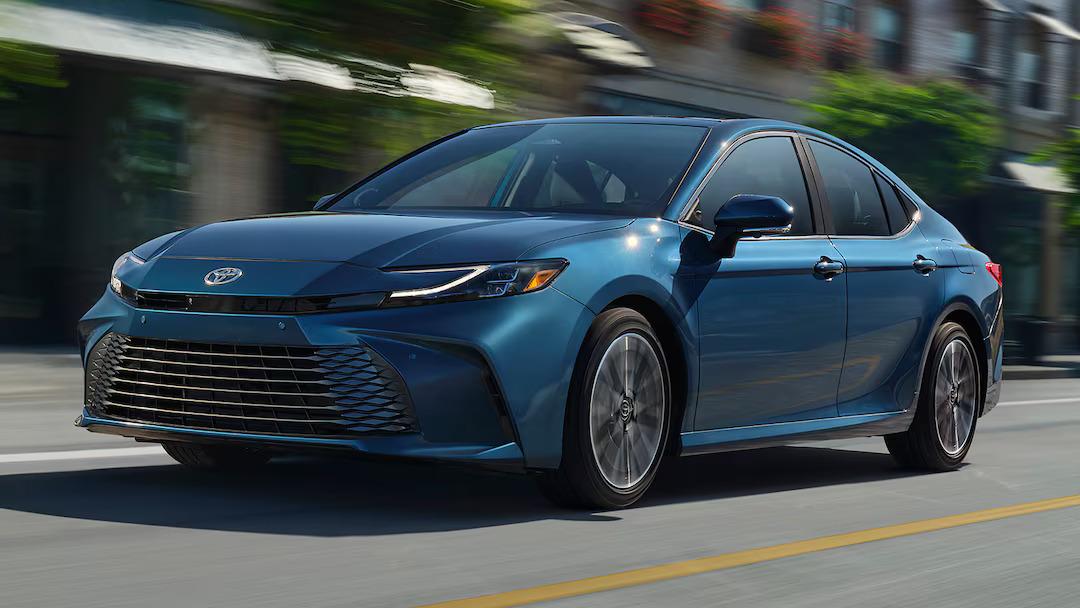
What makes the Camry truly exceptional isn’t just mechanical reliability but its resistance to electrical and electronic failures that plague many modern vehicles.
The straightforward infotainment systems may lack cutting-edge features, but they continue functioning years after more sophisticated competitors require expensive module replacements.
Climate control systems maintain effectiveness through extreme temperature variations, and power accessories operate with the same consistency on day 1,000 as they did on day one.
Consumer Reports and J.D. Power surveys consistently place the Camry at or near the top of reliability ratings, with owners reporting fewer problems per vehicle than almost any other model in its class.
This translates to tangible benefits: lower lifetime ownership costs, stronger resale values, and perhaps most importantly, the peace of mind that comes with knowing your transportation won’t unexpectedly fail you during crucial moments.
For drivers who value function over flash and dependability over novelty, the Toyota Camry remains the benchmark against which other daily drivers are measured.
2. Honda Civic
The Honda Civic has earned its place as a reliability icon through a combination of thoughtful engineering, quality manufacturing, and an uncanny ability to soldier on despite sometimes neglectful maintenance.
This compact car transcends its humble economy car roots by delivering decades of faithful service to millions of owners worldwide, making it a perpetual favorite for those who prioritize hassle-free transportation.
Honda’s approach to the Civic’s powertrain exemplifies mechanical excellence through simplicity. The naturally aspirated four-cylinder engines particularly the venerable K-series are engineering masterpieces that resist common failure points.
With properly timed oil changes, these engines routinely exceed 250,000 miles without internal repairs.
The manual transmissions are among the industry’s best, with slick, precise shifting that rarely deteriorates with age, while Honda’s conventional automatics avoid the complex electronics and hydraulics that create headaches in competitors’ transmissions.
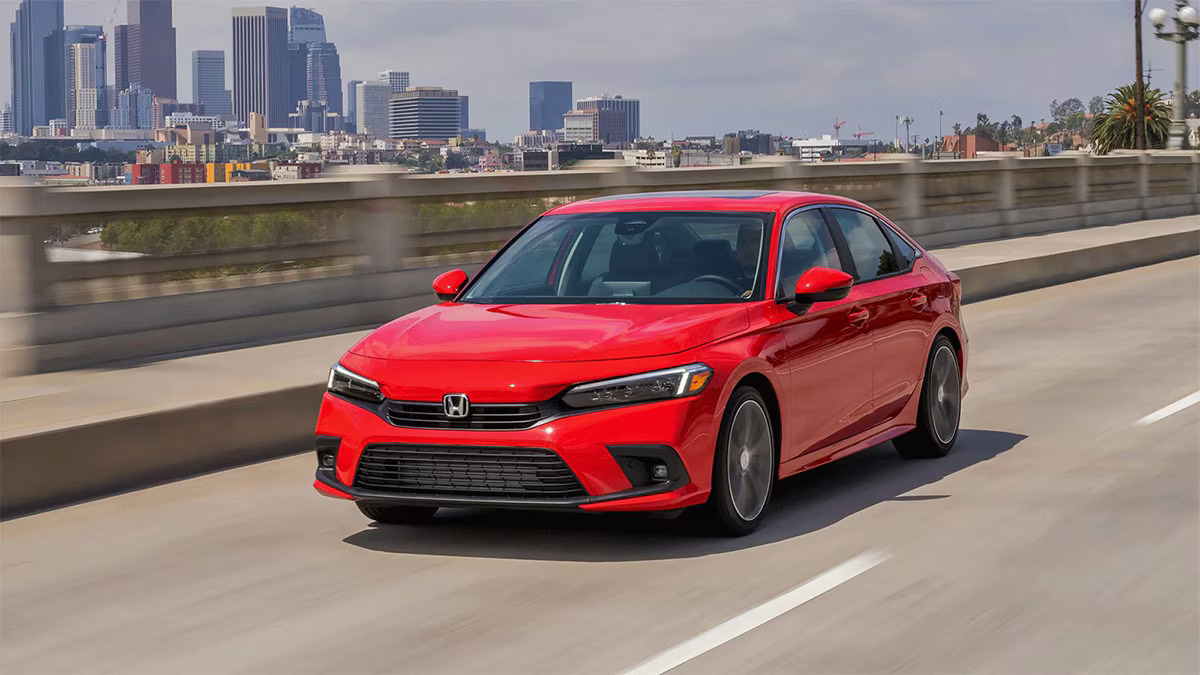
What truly distinguishes the Civic is its resistance to the thousand small annoyances that erode satisfaction with other vehicles. Interior components maintain their integrity without developing rattles or loose fittings.
Exterior finishes from paint to trim pieces demonstrate exceptional durability against environmental stressors. Even consumable components like brakes and suspension parts tend to outlast those in competing models, reducing maintenance frequency and ownership costs.
The Civic’s reliability credentials are reinforced by impressive statistics in industry reliability measurements. Long-term studies by Consumer Reports show that five-year-old Civics typically experience 60% fewer problems than the average vehicle in their class.
This translates directly to fewer repair shop visits and more miles of trouble-free driving. When issues do arise, the Civic’s popularity ensures widespread parts availability and mechanical familiarity among service technicians, further reducing ownership headaches.
Perhaps most telling is the Civic’s multigenerational presence in many families the car that serves parents reliably often becomes the trusted first vehicle for their children years later.
This enduring dependability explains why the Civic maintains strong resale values and why so many owners become repeat customers, creating a virtuous cycle that incentivizes Honda to maintain its high standards with each new generation.
3. Lexus ES
The Lexus ES represents the pinnacle of automotive dependability in a luxury package, consistently demonstrating that refinement and reliability need not be mutually exclusive.
Built on Toyota’s proven engineering foundations but raised with premium materials and greater attention to detail, the ES series has established itself as the thinking person’s luxury car, one that delivers comfort and prestige without the maintenance nightmares often associated with European competitors.
The heart of the ES’s reliability lies in its powertrain philosophy. Whether equipped with the silky-smooth V6 engine or the sophisticated hybrid system, these powerplants are designed with generous engineering tolerances and conservative tuning that prioritize longevity over maximum performance.
The result is an engine that rarely experiences the oil consumption issues, timing chain failures, or turbocharger problems that plague other luxury vehicles.
The transmission is typically a conventional automatic with eight or ten speeds, in recent models avoid the complex dual-clutch designs that have caused headaches for owners of German luxury cars.
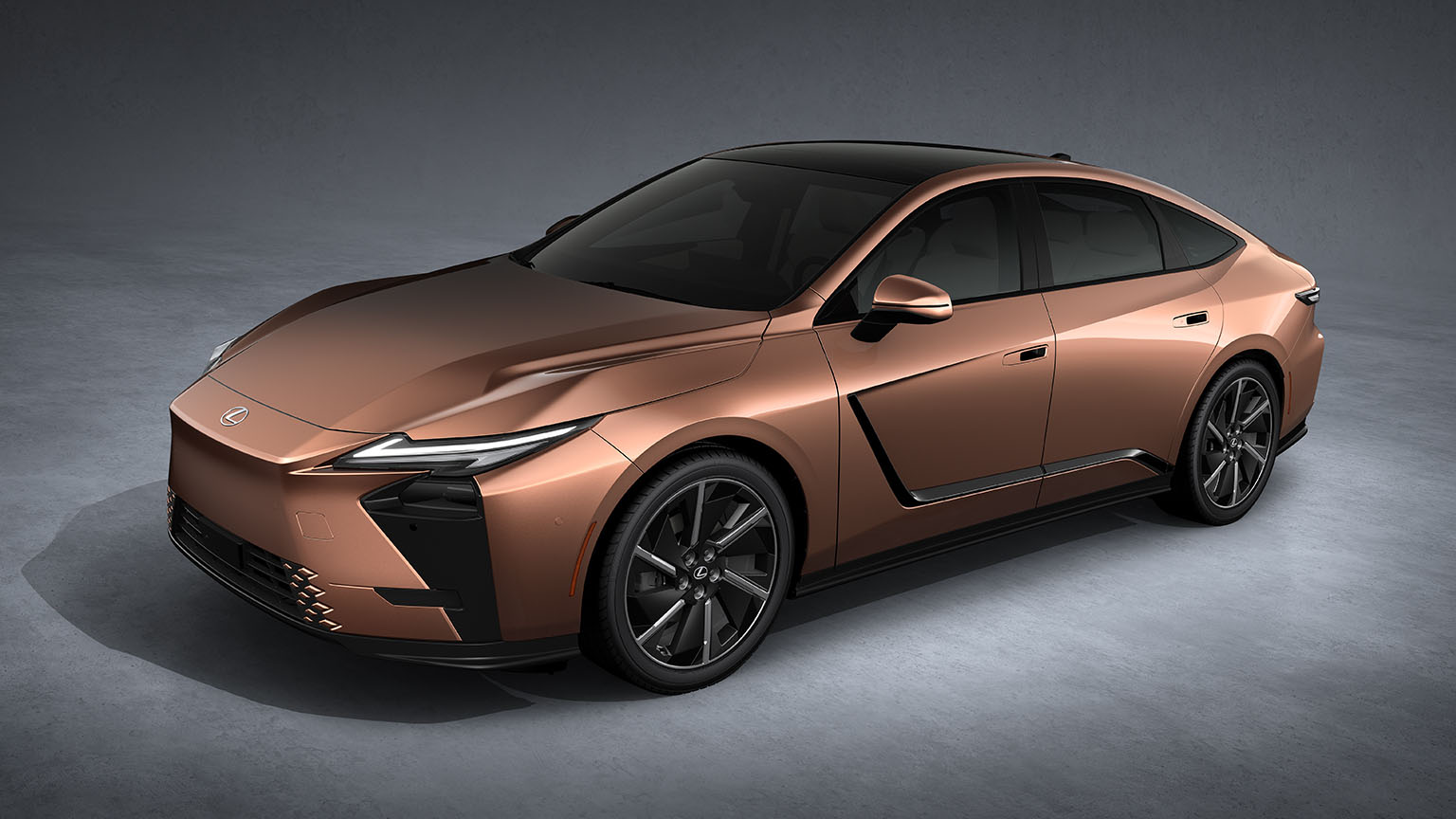
Inside the cabin, the ES demonstrates how luxury can be engineered for durability. The electrical systems show remarkable resistance to the gremlins that haunt many premium vehicles as they age.
Climate control systems maintain their effectiveness through years of operation without developing the mysterious noises or performance degradation common in competitors.
Even the leather upholstery and wood trim elements age gracefully, maintaining their appearance and integrity long after lesser materials would show significant wear.
This exceptional reliability record is consistently reflected in owner satisfaction surveys and quality metrics. J.D. Power Vehicle Dependability Studies frequently rank Lexus at the top among all manufacturers, with the ES often leading its segment.
A five-year-old ES typically experiences 45-65% fewer problems than the luxury category average, translating to fewer dealer visits and significantly lower ownership costs despite the premium purchase price.
Perhaps the most telling endorsement comes from the insurance industry and used car markets, where the ES commands stronger residual values than most competitors and lower insurance rates due to its predictable repair costs and superior safety record.
For drivers seeking the comfort and status of a luxury sedan without the stereotypical luxury car maintenance burden, the Lexus ES delivers a compelling proposition that has converted countless former European luxury car owners into lifelong Lexus loyalists.
4. Mazda MX-5 Miata
The Mazda MX-5 Miata defies the conventional wisdom that sports cars must be temperamental and maintenance-intensive.
Over four generations since its 1989 introduction, this lightweight roadster has built an enviable reputation for combining driving excitement with day-in, day-out dependability that puts many mundane sedans to shame.
The Miata’s reliability is particularly impressive considering its performance-oriented nature and the fact that many examples are driven enthusiastically by their owners.
Mazda’s engineering philosophy for the Miata emphasizes mechanical simplicity and robustness. The naturally aspirated four-cylinder engines whether the earlier 1.8L units or the more recent 2.0L versions, are deliberately understressed and feature overbuilt components that withstand spirited driving without complaint.
The short-throw manual transmissions are marvels of mechanical precision that maintain their smooth shifting characteristics well beyond 150,000 miles with proper fluid maintenance.
Even the limited-slip differentials, typically weak points in sports cars, demonstrate remarkable longevity in the Miata.
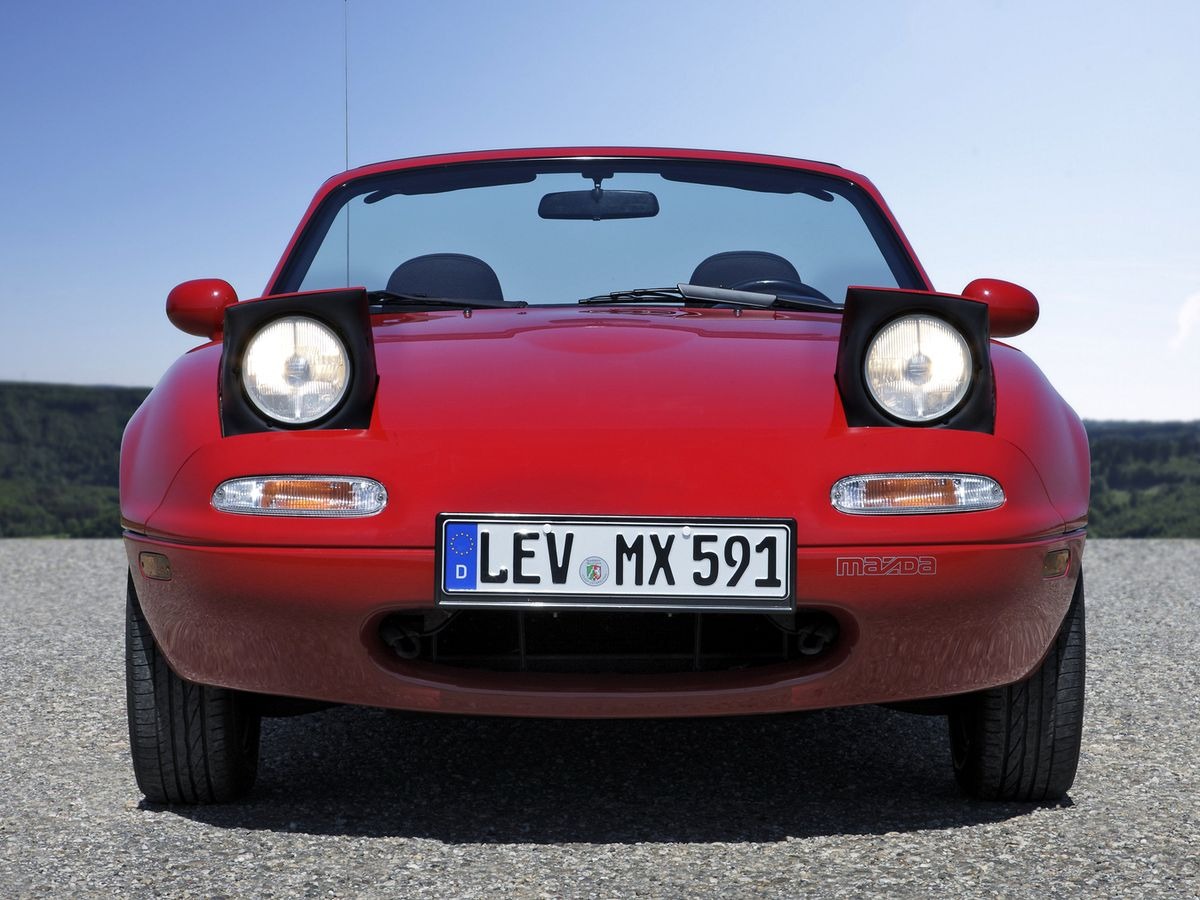
The Miata’s lightweight construction contributes significantly to its reliability profile. With less mass to manage, components throughout the vehicle experience reduced stress during operation.
Suspension components, brake systems, and chassis elements all benefit from this weight advantage, leading to longer service lives and more consistent performance over time.
The simplicity of the soft top mechanism, free from the complex hydraulics and electronics that plague retractable hardtop convertibles means fewer potential failure points in a critical system.
Owner surveys consistently highlight the Miata’s exceptional dependability. According to long-term reliability studies, MX-5 owners report approximately 70% fewer serious mechanical issues than the sports car segment average over five years of ownership. This translates to lower maintenance costs despite the performance-oriented nature of the vehicle.
When maintenance is required, the engine bay’s accessible layout and the wealth of available knowledge in enthusiast communities make even complex procedures more manageable than in many mainstream vehicles.
Perhaps the most compelling evidence of the Miata’s reliability comes from its widespread use as a weekend track car and autocross competitor.
These vehicles endure abuse that would devastate most production cars, yet countless examples withstand years of high-rpm operation and aggressive driving while requiring little more than routine maintenance.
For drivers seeking the joy of a pure sports car experience without the traditional sports car ownership headaches, the Mazda MX-5 Miata represents the perfect synthesis of excitement and dependability.
Also Read: 5 Trucks That Survive Generations and 5 That Die Young
5. Subaru Outback
The Subaru Outback stands as a testament to reliability in challenging conditions, earning its reputation as the go-to vehicle for drivers who face adverse weather and rugged terrain without wanting the bulk or fuel consumption of a traditional SUV.
This wagon-crossover hybrid has built a cult following in snowbelt states, mountainous regions, and among outdoor enthusiasts precisely because it delivers consistent performance when environmental conditions are at their worst.
At the core of the Outback’s dependability is Subaru’s commitment to its horizontally opposed “boxer” engine design and symmetrical all-wheel-drive system.
While unconventional, this powertrain configuration has been refined over decades, resulting in a lower center of gravity that improves handling stability and reduces component stress.
The standard all-wheel-drive system not merely an optional add-on as with many competitors is engineered as an integral part of the vehicle rather than an afterthought, providing superior traction without the complexity and potential failure points of part-time systems.
The Outback’s reliability in extreme conditions is particularly noteworthy. Cold-weather starting problems that plague many vehicles are remarkably absent in the Subaru lineup, with owners in Alaska and northern Canada reporting consistent first-crank starts even at temperatures well below zero.
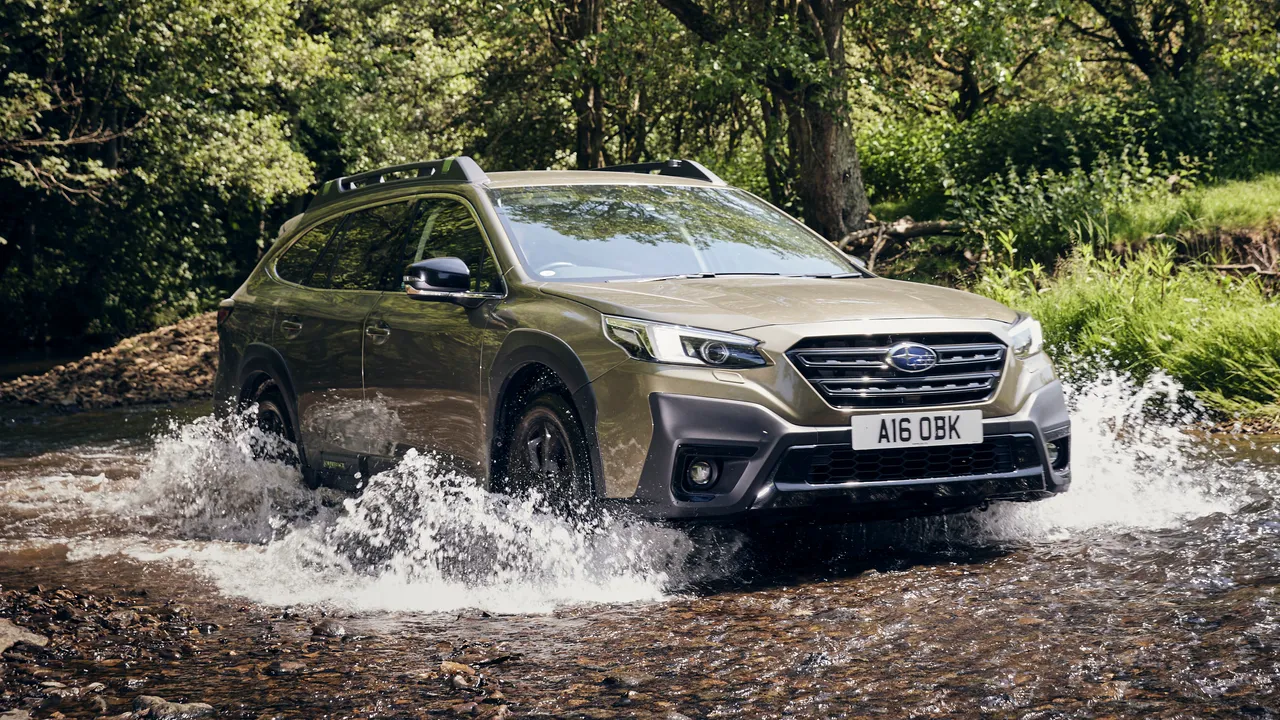
The raised ground clearance combined with well-protected underbody components means fewer damaged oil pans or punctured fuel tanks when venturing off maintained roads.
Even the heated side mirrors and windshield wiper de-icers features that often fail in competitors demonstrate exceptional longevity in the Outback.
Maintenance statistics reveal the Outback’s superior longevity, with approximately 80% of all Outbacks sold in the last 15 years still registered and on the road, a figure that exceeds the segment average by nearly 15%.
Consumer Reports’ reliability data shows that Outbacks typically experience 30-40% fewer drivetrain-related issues than comparable crossovers, with particularly strong performance in transmission reliability and electrical system durability.
The Outback’s reputation for reliability has created one of the most loyal owner bases in the automotive world, with repeat purchase rates exceeding 67% according to industry studies.
This loyalty stems not just from the vehicle’s ruggedness but from owners’ experiences of dependability when it matters most, whether going through unplowed roads during winter storms or reaching remote trailheads where mechanical failures could have serious consequences
For drivers who need all-weather capability without sacrificing daily drivability or reliability, the Subaru Outback continues to set the standard that competitors struggle to match.
5 Cars You Can’t Depend On Every Morning
1. Range Rover (2010-2018)
The Range Rover represents a study in contrasts: breathtaking luxury and off-road capability undermined by notorious unreliability that has achieved almost legendary status among automotive enthusiasts.
Particularly troublesome were models produced between 2010 and 2018, which combined increasingly complex electronics with persistent quality control issues to create vehicles that could deliver extraordinary experiences when they were functioning properly.
Electrical system failures constitute the Range Rover’s most common and frustrating problems. Owners frequently report complete infotainment system crashes, random activation of warning lights, and mysterious battery drains that leave vehicles unable to start after sitting overnight.
The air suspension system a signature feature that provides both remarkable off-road articulation and on-road comfort, is particularly problematic, with compressors failing at surprisingly low mileages and air springs developing leaks that cause vehicles to “sag” overnight.
When these systems fail, owners face repair bills that routinely exceed $2,000 for suspension components alone.
Powertrain reliability presents another significant concern, particularly with the 5.0L V8 engine that suffered from timing chain tensioner failures and coolant leaks into the engine valley. These issues could progress from minor symptoms to catastrophic engine failure with little warning.
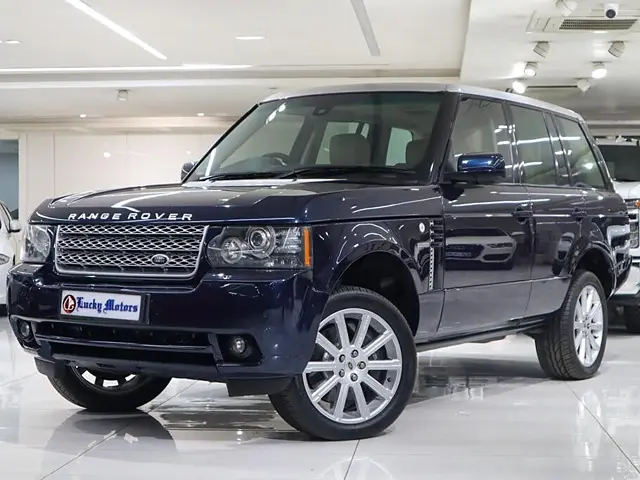
Transmission problems compounded these issues, with the ZF eight-speed automatic requiring complete rebuilds in some vehicles before reaching 70,000 miles. Even the transfer case essential for the Range Rover’s vaunted off-road capability demonstrates poor longevity compared to less expensive competitors.
The consequences of these reliability issues extend beyond mere inconvenience. Consumer Reports reliability surveys consistently ranked the Range Rover among the least reliable vehicles sold in North America, with owners reporting an average of 2.3 significant problems per vehicle within the first three years of ownership, more than triple the industry average.
This poor reliability record translates into catastrophic depreciation, with some model years losing over 60% of their value within just three years. Perhaps most telling is the frequency with which Range Rovers appear on flatbed tow trucks headed to dealership service departments.
Many owners report developing first-name relationships with their service advisors due to frequent visits, and Internet forums dedicated to Range Rover ownership often feature more troubleshooting discussions than adventure stories.
For those seduced by the Range Rover’s undeniable presence and capability, the ownership experience often becomes an expensive lesson in the difference between luxury vehicle price tags and actual quality engineering.
2. Fiat 500 (North American Version)
The Fiat 500’s reintroduction to North America in 2011 brought Italian style and European charm to American roads, but unfortunately, it also brought reliability problems that quickly tarnished the model’s cute retro appeal.
While visually fascinating and entertaining to drive, the North American version of the 500 became notorious for leaving owners stranded and service departments puzzled with its array of persistent problems that defied conventional troubleshooting.
Electrical issues plague the Fiat 500 with remarkable consistency. Owners frequently report complete electrical system failures where vehicles suddenly shut down while driving, only to mysteriously restart after sitting for variable periods.
The key fob recognition system demonstrates particular temperamentality, with many vehicles failing to recognize their keys on cold mornings or after battery replacements.
Dashboard warning lights illuminate randomly and persistently, creating a “boy who cried wolf” scenario where owners eventually ignore potentially important warnings because of countless false alarms.
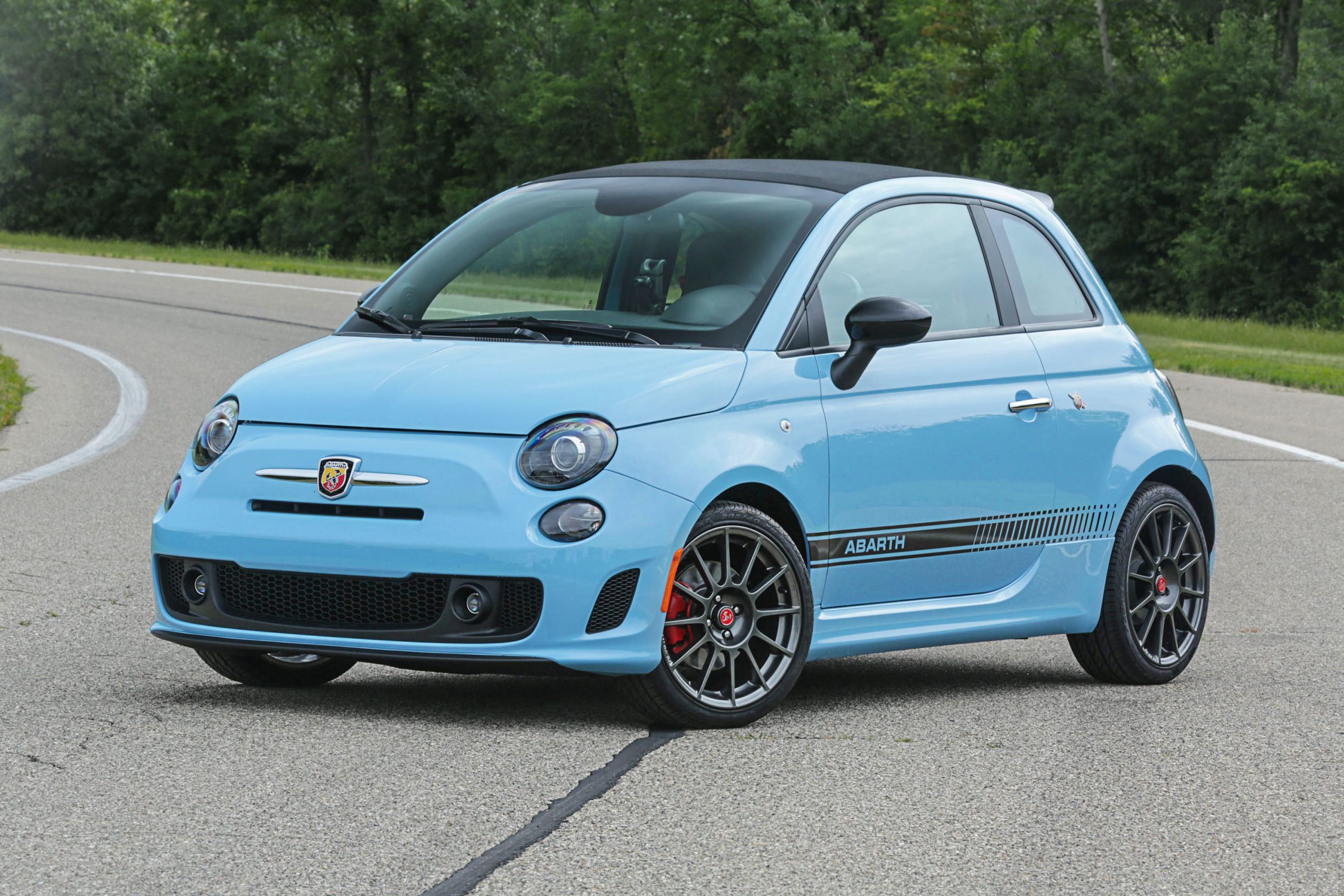
The powertrain reliability record is equally concerning. The 1.4-liter MultiAir engine, while innovative in design, suffers from premature timing chain wear that can lead to catastrophic engine failure if not addressed early.
More commonly, owners report rough idle conditions, hesitation during acceleration, and check engine lights related to oxygen sensors and catalytic converter efficiency.
The manual transmissions develop synchronizer problems that manifest as grinding during shifts, while the automatic transmissions exhibit harsh shifting and premature clutch pack wear.
Quality control issues extend to the vehicle’s basic components. Water leaks around windshields and sunroofs are remarkably common, leading to electrical shorts and interior mold problems in humid climates.
Interior trim pieces detach unexpectedly, and exterior components like mirror covers and decorative elements frequently work loose or disappear entirely during normal driving.
Even mundane components like door handles and window regulators demonstrate failure rates far exceeding industry norms.
The statistical evidence of the Fiat 500’s reliability problems is damning. J.D. Power’s Vehicle Dependability Study consistently ranked Fiat at the bottom of all manufacturers during the model’s primary production years.
Warranty claim rates for the 500 exceeded category averages by nearly 70%, and the model experienced one of the steepest first-year depreciation curves in the automotive market losing approximately 45% of its value within twelve months of purchase.
Perhaps most tellingly, Fiat’s return to the North American market was ultimately short-lived, with declining sales forcing the brand to withdraw most models from the U.S. by 2020, leaving behind a legacy of stylish but temperamental vehicles and frustrated former owners.
3. Nissan Altima (2013-2018 with CVT)
The 2013-2018 Nissan Altima represents a cautionary tale in automotive engineering, where a historically reliable nameplate was compromised by a single critical component: the continuously variable transmission (CVT).
During this generation, Nissan aggressively promoted their CVT technology as a fuel-efficiency breakthrough, but the reality proved far less positive for hundreds of thousands of owners who discovered their transmissions were the vehicle’s Achilles’ heel.
The CVT’s problems typically begin subtly slight hesitation when accelerating from a stop, minor shuddering during steady-state cruising, or occasional momentary loss of power when merging onto highways.
However, these symptoms often progress rapidly to more serious manifestations: violent shaking during acceleration, complete loss of forward motion, and in many cases, catastrophic internal failure requiring complete transmission replacement.
Most concerning is the unpredictability of these failures, with many occurring without warning between 60,000 and 100,000 miles just as the original warranty coverage expired. Beyond the transmission woes, this generation of Altima suffered from additional reliability concerns that compounded owner frustration.
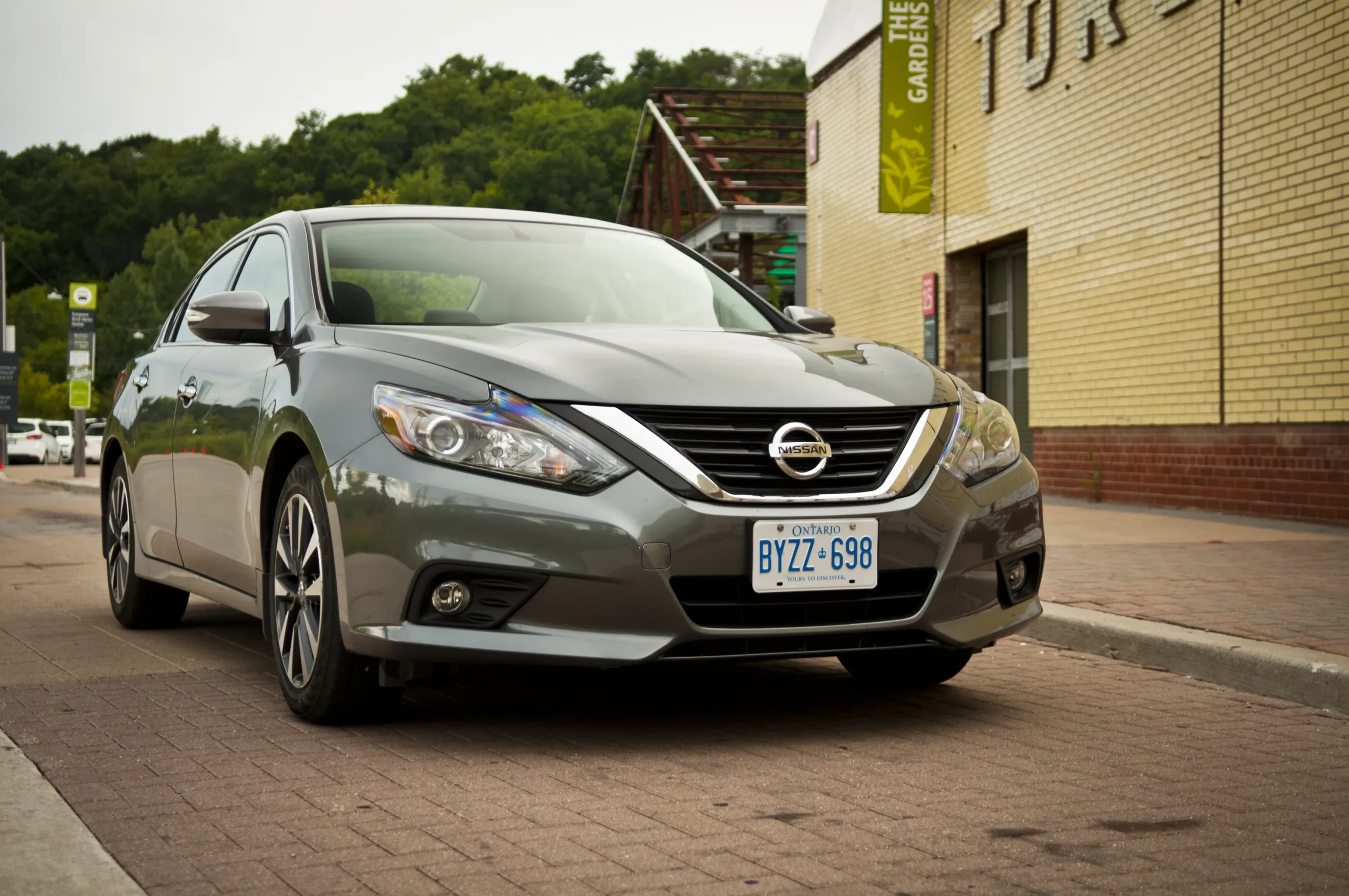
The 2.5-liter four-cylinder engine developed a reputation for excessive oil consumption without triggering warning lights, leading some owners to inadvertently run engines dangerously low on oil.
Electrical system problems affected everything from the push-button start system to the power steering, with some vehicles requiring multiple computer module replacements within their first three years.
Even the exhaust system demonstrated poor durability, with catalytic converters frequently failing prematurely and heat shields developing annoying rattles.
The statistical evidence of these problems is overwhelming. Nissan extended the CVT warranty to 10 years/120,000 miles for some model years in response to class-action lawsuits, a tacit acknowledgment of widespread issues.
Consumer Reports reliability data showed transmission problem rates approximately 500% higher than category averages. Most tellingly, used vehicle markets applied substantial devaluations to CVT-equipped Altimas, with identically equipped examples selling for 15-25% less than competitors of similar age and mileage.
Perhaps the greatest indictment of this generation Altima’s reliability comes from the rental car industry, a sector that previously embraced the model for its historical dependability and low operating costs.
By 2017, major rental agencies had begun divesting their Altima fleets earlier than planned and replacing them with competing models that demonstrated better reliability metrics and lower total cost of ownership.
For consumers seeking dependable daily transportation, the lesson from the 2013-2018 Altima experience is clear: even established, reliable nameplates can be undermined when manufacturers prioritize novelty over proven engineering.
4. Volkswagen Tiguan (First Generation, 2009-2017)
The first-generation Volkswagen Tiguan arrived in North America promising European driving dynamics in a compact crossover package, but quickly established itself as one of the least reliable vehicles in its segment.
While offering an engaging driving experience and upscale interior appointments, this initial Tiguan iteration combined complex engineering with questionable component durability to create a maintenance nightmare that left many owners regretting their purchase decision within the first few years of ownership.
The 2.0-liter turbocharged engine at the heart of every first-generation Tiguan became notorious for multiple critical issues. Timing chain tensioner failures often occur without warning between 60,000 and 100,000 miles and could cause catastrophic engine damage if the chain jumped timing.
Carbon buildup on intake valves, a common problem with direct-injection engines, occurred with particular severity in the Tiguan, requiring expensive cleaning procedures every 30,000-40,000 miles to maintain performance.
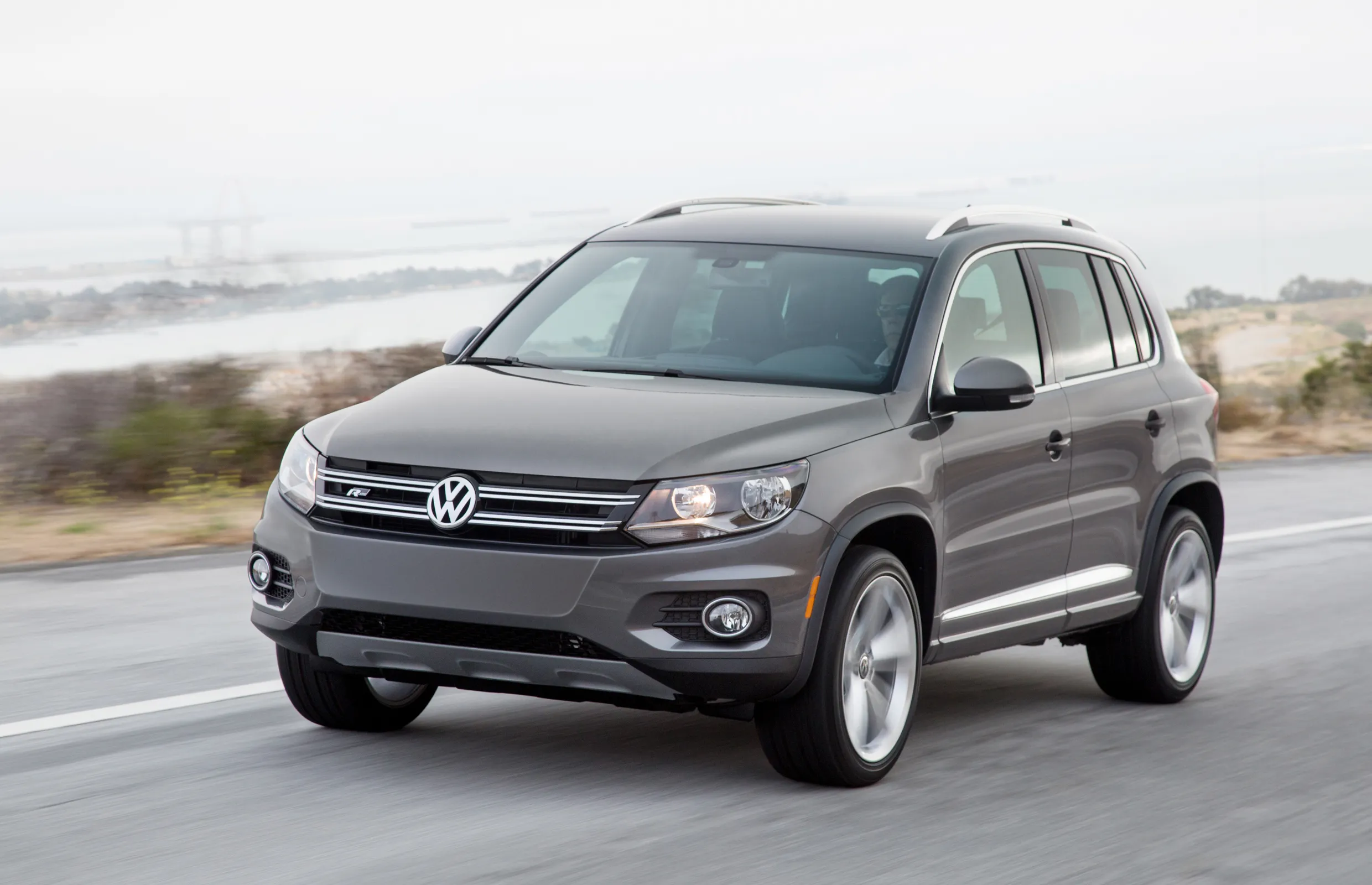
Most frustratingly, water pump failures were remarkably common, with plastic impellers degrading and causing coolant leaks that could lead to overheating if not promptly addressed.
Electrical problems plagued the Tiguan throughout its body systems. The sunroof drainage system’s inadequate design allowed water to enter the interior, damaging electrical components and causing short circuits that affected everything from window operation to airbag systems.
Coil pack failures occurred with surprising frequency, causing misfires and check engine lights that returned persistently even after repair.
Even the fuel system demonstrated poor reliability, with high-pressure fuel pumps failing prematurely and fuel injectors requiring replacement far earlier than in competing models.
The Tiguan’s reputation for unreliability is supported by damning statistical evidence. Consumer Reports consistently ranked it among the least reliable compact SUVs, with owner satisfaction scores that declined dramatically with vehicle age.
Warranty claim rates exceeded segment averages by nearly 60%, and the model demonstrated one of the highest frequencies of unscheduled repair visits in its class.
Analysis of used vehicle auction data revealed that first-generation Tiguans typically sold for 25-30% less than comparable Japanese competitors of similar age and mileage a market correction that reflected the vehicle’s problematic reliability record.
The ownership experience deteriorated further due to the Tiguan’s maintenance cost structure. When problems did occur, parts prices and labor times typically exceeded category averages by 40-50%.
Many repairs required specialized tools and diagnostic equipment available only at dealerships, limiting owners’ ability to seek competitive repair options.
For buyers attracted by the Tiguan’s initial Germanic appeal and driving dynamics, the ownership experience often became an expensive education in the difference between design sophistication and actual engineering durability.
5. Chrysler 200 (2015-2017)
The 2015-2017 Chrysler 200 represented Fiat Chrysler Automobiles’ ambitious attempt to compete in the midsize sedan segment, but instead became one of the shortest-lived modern vehicle generations due to its profound reliability issues.
Despite attractive styling and a feature-rich interior, the 200s’ troubled mechanical and electrical systems turned what should have been a mainstream family sedan into a persistent headache for owners and a warranty claim nightmare for the manufacturer.
The nine-speed automatic transmission developed by ZF and calibrated by Chrysler became the 200’s most notorious problem area.
Owners frequently reported harsh, unpredictable shifting, confusion between gears during moderate acceleration, and complete transmission failures requiring replacement within the first 60,000 miles.
The electronic shifter design compounded these problems, with an unintuitive interface that confused drivers and sometimes failed to properly register gear selection.
Software updates intended to address these issues often created new problems, resulting in vehicles that never achieved satisfactory drivability despite multiple dealer interventions.
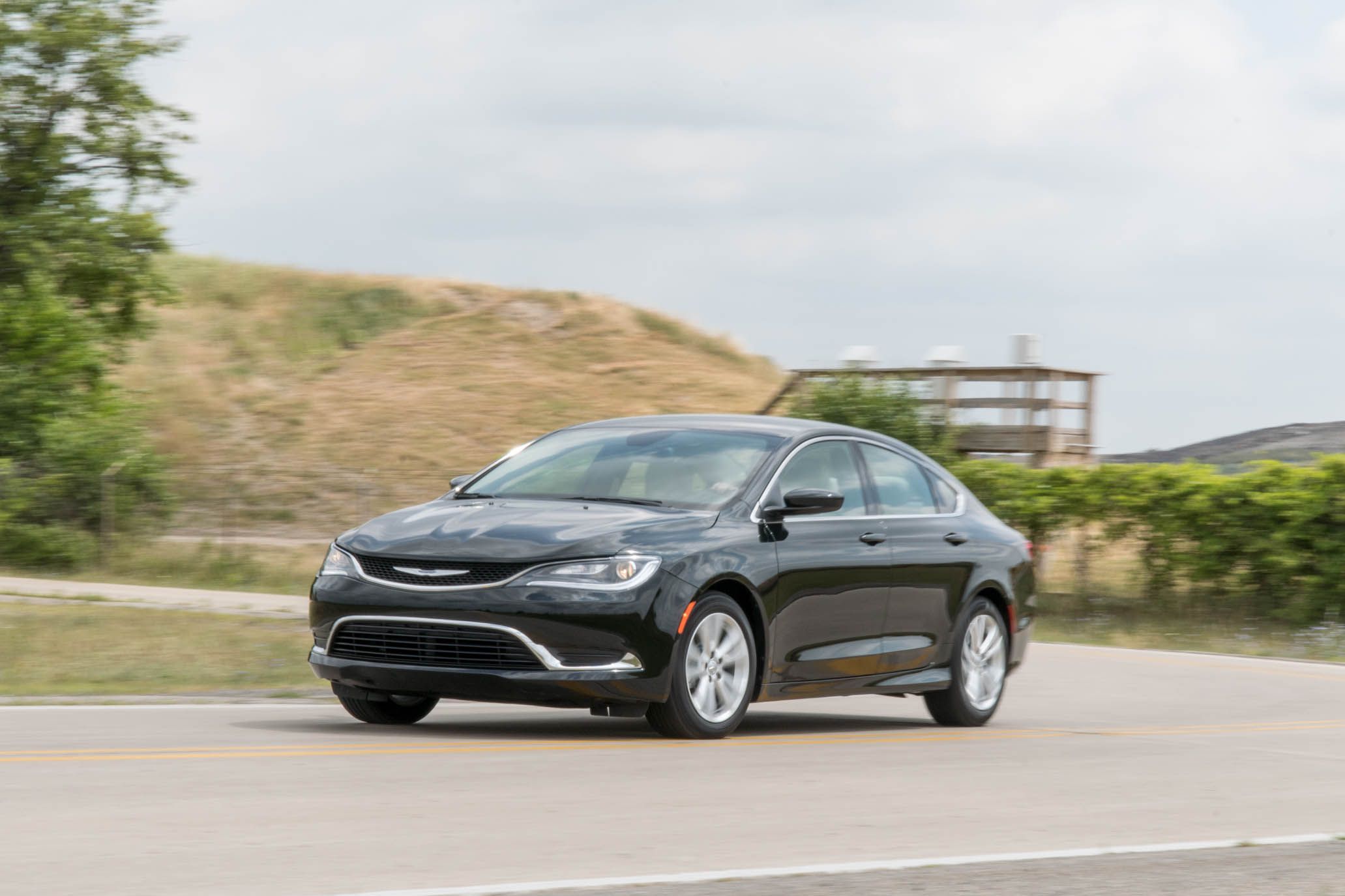
Electrical gremlins manifested throughout the 200’s systems with remarkable consistency. The UConnect infotainment system was prone to freezing, random reboots, and complete failures requiring module replacement.
Power window regulators demonstrated premature failure rates estimated at seven times the industry average. Most concerning were the random electrical faults affecting safety systems, with numerous reports of airbag warning lights, adaptive cruise control malfunctions, and automatic emergency braking systems activating without legitimate triggers.
The 200s’ build quality issues extended beyond complex systems to basic components. Water leaks around poorly sealed windshields and sunroofs were common complaints on owner forums.
Interior trim pieces worked loose over relatively short timeframes, creating annoying rattles and an impression of premature aging. Even paint adhesion proved problematic, with clearcoat failures occurring at unusually low mileages, particularly in southern climates.
The statistical evidence of the 200’s problems is overwhelming. J.D. Power’s Initial Quality Study ranked it among the bottom 10% of all vehicles during its production years.
Warranty claim rates approached twice the midsize sedan segment average, and rental fleet operators traditionally significant customers for Chrysler products reported maintenance costs approximately 60% higher than competitive vehicles in their fleets.
The rapid market correction was perhaps the most damning evidence: by 2017, three-year-old examples had lost nearly 65% of their original value depreciation so severe that it rendered leasing programs unsustainable.
FCA’s decision to discontinue the Chrysler 200 after just three model years speaks volumes about its problematic nature. Few modern vehicles have experienced such a short production run without external factors forcing the decision.
For consumers seeking reliable daily transportation, the 200 serves as a cautionary example of how attractive styling and feature content cannot compensate for fundamental reliability deficiencies that undermine the core transportation function of a family sedan.
Also Read: 5 Vehicles That Are Surprisingly Capable and 5 That Pretend to Be

